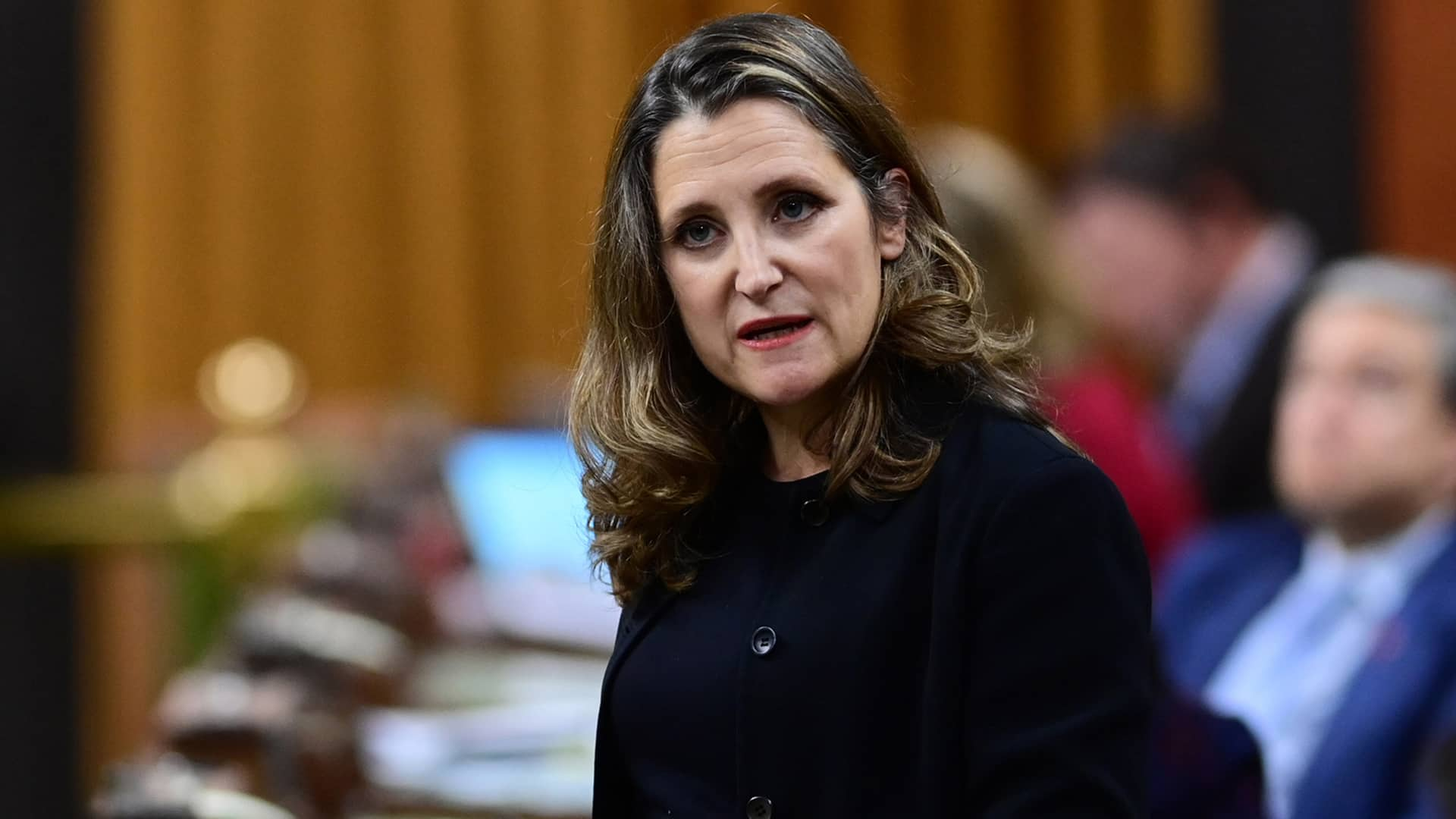
This column is an opinion by Robert Asselin, senior vice-president of policy at the Business Council of Canada, where he leads the development of strategies that contribute to jobs and economic growth. His experience includes academia, the private sector and government, including roles a policy advisor to two prime ministers and as a policy and budget director to the minister of finance. For more information about CBC’s Opinion section, please see the FAQ.
It’s not easy to find, but on page 142 of the federal government’s fiscal and economic update, in a little shadowed box, there’s a number that will have a big impact on Canadians for generations to come: “Accumulated deficit: $1,423 billion (55.5 per cent of GDP).”
That is Canada’s estimated federal debt in 2024.
Of note, this number does not include the long runway of new commitments promised in the fiscal update. Factoring in that extra spending, it is reasonable to project that our federal debt could climb to $1.7 trillion in the next few years.
By then, the federal government will have effectively added 1,000 billion dollars – yes, that is what $1 trillion means – to Canada’s debt since the end of the 2019 fiscal year.
Provincial governments have been accruing billions of dollars of new debt, too. If you add them together, in most cases the combined federal/provincial debt-to-GDP ratio has already reached 100 per cent of gross domestic product (GDP). In other words, the combined debt is equal to the entire value of all the goods and services produced in Canada in a year.
The government unveiled a record deficit of $381 billion in its fiscal update, along with spending plans for more pandemic relief and a huge stimulus plan to jolt the economy post-pandemic. 2:18
Of course, we are reminded constantly not to worry about the burgeoning debt, because the federal government has a lot of fiscal power and real interest rates are low — and will remain there for the foreseeable future.
As if that’s all we needed to care about.
Let’s agree wholeheartedly that extraordinary spending was absolutely necessary to help Canadians through the pandemic. Despite some weaknesses in the government’s emergency programs, there is great value in ensuring that Canadians are kept safe and healthy during the crisis.
Let’s also set aside the huge inter-generational equity problem stemming from the difficult questions around who will end up paying back the massive and growing debt we are incurring. Some tough and painful choices lie ahead if we want to ensure future generations are not hobbled by our current spending decisions.
Instead, let’s ask ourselves a straightforward and honest question: $1 trillion later, will Canada be better positioned for success in the emerging global economy?
Finance Minister Chrystia Freeland speaks with Rosemary Barton, CBC’s chief political correspondent, about the federal fiscal update and how the government will continue to provide financial support through the end of the COVID-19 pandemic. 3:30
A brighter economic future doesn’t happen by luck or just by virtue of saying we should have one. It requires a long-term plan and strategic investments in our productive capacity.
As former U.S. Treasury Secretary Larry Summers has often said, growth, not consumption, must be the priority of expansionary fiscal policy. Hypnotized by magical thinking that large deficits are by design a substitute for economic growth, Canada compares poorly to its peers when it comes to long-term ambitions.
Our competitors are taking a longer view of what is needed now to better position themselves for the future.
U.S. President-elect Biden has pledged billions of dollars in new and bold R&D investments in promising, fast-growing sectors. Germany has its 2030 Industrial strategy; Australia its JobMaker Plan. The United Kingdom just announced its Green Industrial Strategy. China has put science and technology at the forefront of its economic agenda.
Besides these initiatives, some are literally shooting for the moon with investments in innovation. NASA recently announced it had selected the companies that will collect resources from the moon, building knowledge for future missions to Mars. Two companies are from the U.S, one is from Europe and one from Japan. Why isn’t there one from Canada?
CBC’s At Issue panel looks at the political messaging within the Liberal government’s first federal economic update since the start of the COVID-19 pandemic. Plus, what it could mean for the spring budget and a federal election. 9:08
One contributing factor is that Canada is only investing about 1.6 per cent of GDP on R&D, while several peer countries – including Denmark, Finland, Japan and South Korea – are close to or exceed 3 per cent.
Where is Canada’s economic vision for the future?
Why can’t we leverage our intellectual capital to create global firms that capture new markets like other countries do? Are we positioning ourselves to be successful in the fast-growing fields of artificial intelligence, cleantech or biotech?
When it comes to talent and intellectual property, we look more and more like a farm team for American companies. Where is our comprehensive growth agenda to address the structural challenges we face, such as a rapidly aging population, low productivity, and consistent trade deficits?
Electric vehicle charging stations and $5,000 grants for home retrofits may look flashy in a government document, but they will not get the country anywhere near the low-carbon transition we aspire to. And they do little to create the advanced industries we will need to drive our economy.
The debate over how cheap our debt will be to finance in the short run is inconsequential compared to the magnitude of the fiscal and economic challenges we will face over the longer horizon if we don’t raise our game. Our peer countries are not waiting for the pandemic to end to plan their economic futures, they are already moving fast and with purpose.
Are we happy to play for the bronze or do we want to go for gold? That is, figuratively, the trillion-dollar question we should be asking ourselves.















